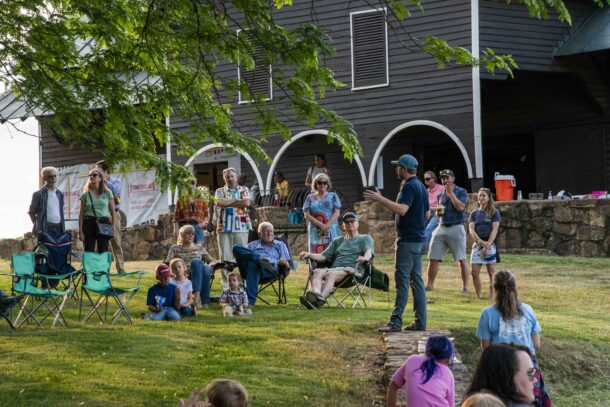This year has been a whirlwind! As schools and teachers were figuring out a new way of life, the education team at FOR has been anxiously waiting for the opportunity to get back to the students! Robin Didlake, a 9th grade environmental science teacher at Caroline High School, was the first to ensure her students had the opportunity to participate in a MWEE or Meaningful Watershed Education Experience.
 During the 2nd week of school, FOR taught each of the 9th grade classes about their local watershed through chemical water testing of the Rappahannock. We tested the levels of Dissolved Oxygen, pH levels, turbidity and the amount of phosphates and nitrates. This provided background knowledge about students’ local watershed health and our conservation efforts.
During the 2nd week of school, FOR taught each of the 9th grade classes about their local watershed through chemical water testing of the Rappahannock. We tested the levels of Dissolved Oxygen, pH levels, turbidity and the amount of phosphates and nitrates. This provided background knowledge about students’ local watershed health and our conservation efforts.
To continue their MWEE, Robin organized an outdoor field experience for all 300 environmental science 9th graders. This outdoor field experience included 4 stations: Kayaking, Water Quality through Macroinvertebrates, Tree Identification, and Wetland Ecoservices. Two of the stations, kayaking and Macroinvertebrates, were led by Friends of the Rappahannock while the other two stations were led by Virginia Department of Wildlife Resources (DWR) and Fort A.P. Hill, respectively. These local partnerships help students make connections to their watershed while also giving them an opportunity to build relationships for possible career paths.
During this field experience, students participated in unique activities. Since we performed chemical water testing in the classroom lesson, students experienced biological testing during this outdoor field experience. Biological testing, or investigating what lives in and around the river, is the most reliable way to gauge the river’s health. We were specifically looking for Macroinvertebrates. Macro means small but can be seen without a microscope; invertebrates means without a backbone. These organisms live in water amongst the leaf litter at the bottom of creeks, ponds and rivers.
During the lesson, students helped collect and identify these organisms in sometimes smelly decaying leaf litter. This activity often causes squeals, excitement, and a little shock. Students reported their joy over learning about what kind of bugs live in muddy water with leaves and sticks. “I got over my fear of the woods when I was learning about the different leaves on the different trees,” 9th grade student. Once the initial fear of insects subsides, interest and intrigue appear. Students learned that organisms like Dragonflies and Damselflies signify a healthy ecosystem. Organisms may not be as scary as they first appear.
 The second outdoor experience, kayaking, gives the students an opportunity to try a new skill. “[With] kayaking, you learned a lot, like how to stay calm,” says a 9th grade student. We had a wide range of skill levels from experienced paddlers to never having been on the water. During this station we teach water safety, how to paddle and how to float in your boat. Students had the option to be on the water for approximately 30 minutes. We kayaked to various parts around the river looking for wildlife such as eagles, fish and evidence of other animals living nearby.
The second outdoor experience, kayaking, gives the students an opportunity to try a new skill. “[With] kayaking, you learned a lot, like how to stay calm,” says a 9th grade student. We had a wide range of skill levels from experienced paddlers to never having been on the water. During this station we teach water safety, how to paddle and how to float in your boat. Students had the option to be on the water for approximately 30 minutes. We kayaked to various parts around the river looking for wildlife such as eagles, fish and evidence of other animals living nearby.
“This trip also helped us learn a lot about our environment and the safety of it. As teens I think it is important to learn about that stuff early so we can also help protect it instead of trashing and destroying it. The kayaking part was not only fun but it gave a lot of beginners a new chance at something and to also help some people improve a skill,” says a 9th grade student.
FOR’s partnership with Robin Didlake and Caroline High School has developed tremendously over the past four years. Thank you to the National Oceanic and Atmospheric Administration (NOAA) for our B-WET grant which helped us inspire the next generation of River Stewards.
Written by Educator Lindsay Anderson

